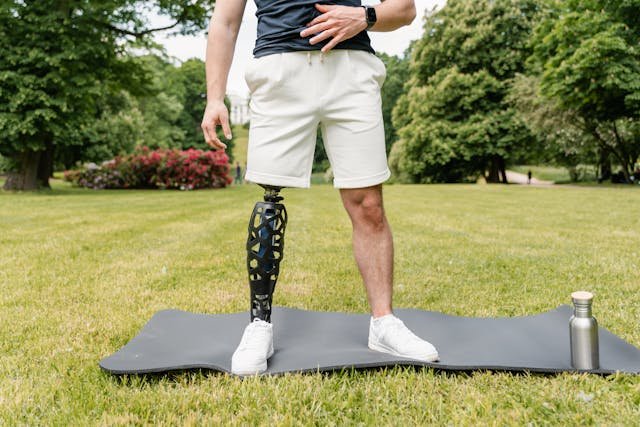When someone needs a prosthetic limb, the reason behind the limb loss matters. It shapes how their body responds, how the prosthetic is designed, and how the journey unfolds. While most people associate prosthetics with accidents or medical conditions, many individuals are born with a limb difference. This is known as congenital limb loss. It may look similar from the outside, but it’s a very different experience compared to someone who loses a limb later in life due to trauma.
At Robobionics, we specialize in prosthetic care for both congenital and trauma-related limb loss. Over the years, we’ve seen how these two paths require different types of support, planning, and technology. In this article, we explore what makes congenital limb loss unique, how prosthetic needs differ, and why personalized solutions are the key to long-term success.
Understanding Congenital Limb Loss
Congenital limb loss happens when a person is born without a part of their arm or leg. It could be a missing finger, hand, foot, or even an entire limb. These differences develop during pregnancy and are usually discovered at birth. While they might seem rare, congenital limb differences affect thousands of children every year around the world.
How and Why Congenital Limb Loss Occurs
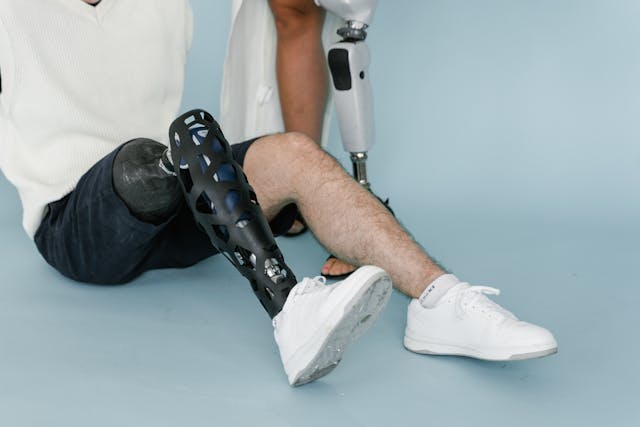
During early pregnancy, a baby’s limbs start to form. Sometimes, for reasons that are not always clear, the growth is interrupted. This can happen due to genetics, environmental factors, or reduced blood supply to a part of the limb. In most cases, there is no specific cause that doctors can point to. It’s simply how the child developed.
Unlike trauma-related amputations, congenital limb loss is not a sudden event. The child grows up with it. This means they never experience the sensation of losing a limb—they simply adapt to their body as it is. This has a huge impact on how they approach prosthetic use later in life.
At Robobionics, we help parents understand these early patterns. We believe education is the first step in building trust, and we work closely with families to plan long-term care starting in infancy or early childhood.
Early Signs and Functional Impact
The way a congenital limb difference affects a child depends on the level and location of the missing limb. Some children are born without fingers, while others may lack a full arm or leg. These differences shape how the child sits, crawls, walks, and uses objects as they grow.
In many cases, children adapt very well. They figure out how to use their remaining limb or find creative ways to do everyday tasks. However, prosthetics can help improve balance, support posture, and assist in doing two-handed or two-legged activities more easily.
At Robobionics, we guide families through each stage of a child’s development, offering solutions that match their needs—not just medically, but practically and emotionally as well.
Growing Up with a Limb Difference
One key difference with congenital limb loss is that children don’t experience grief over losing a limb. They don’t have a memory of what life was like before. This can make acceptance easier. However, as they grow, they may still face emotional challenges—especially in social situations or when comparing themselves to others.
Support from family, schools, and prosthetic teams plays a big role in how children build confidence. Early exposure to prosthetics also helps normalize their use, making it easier to adapt and grow with the device.
Robobionics uses a gentle, child-first approach to care. We introduce prosthetics through play, choice, and encouragement—never pressure.
Trauma-Related Limb Loss: A Very Different Journey
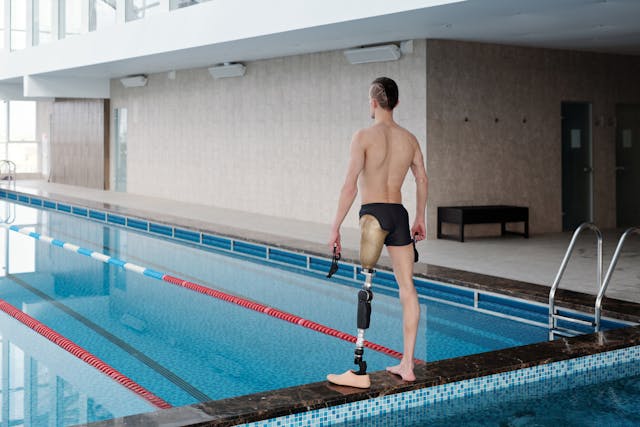
Losing a limb due to trauma is a sudden and life-altering experience. It can happen after an accident, infection, or medical emergency. People who lose a limb later in life face a different kind of adjustment—both physically and emotionally.
Coping with Sudden Loss
For trauma patients, limb loss is a shock. One day, they had a fully functioning body. The next, everything has changed. This loss can bring physical pain, emotional grief, and mental health challenges. It takes time to accept the new reality and learn to trust the body again.
Unlike congenital limb loss, trauma-related amputation requires healing of the surgical site. There may be scars, nerve damage, or phantom limb sensations. These factors affect when and how a prosthetic can be introduced.
At Robobionics, we support trauma patients with compassion and clear steps. We work with surgeons and therapists to plan the right time for fitting, so recovery happens in a safe, thoughtful way.
Relearning Movement and Muscle Control
For someone who loses a limb as an adult or older child, using a prosthetic means learning how to move again. Muscles that once controlled natural movement now have to operate a device. This takes training, patience, and therapy.
It also involves trust. Trauma patients often fear falling, re-injury, or not being able to return to their job or daily routines. A successful prosthetic plan must rebuild both movement and confidence.
Robobionics provides detailed gait training, balance support, and emotional coaching for trauma patients. We help them take each step forward at a pace that feels safe.
Emotional Recovery Is Just as Important
The mental journey after trauma is often the hardest part. Some people struggle with self-image, relationships, or returning to work. Support groups, peer connections, and regular counseling can make a big difference.
A prosthetic is not just a tool—it’s part of the healing process. When it fits well and feels like an extension of the body, it helps restore a sense of wholeness.
At Robobionics, we design prosthetics for trauma patients that focus on comfort, durability, and confidence. We believe that emotional healing should be built into every step of physical recovery.
How Prosthetic Design Differs Between Congenital and Trauma Cases
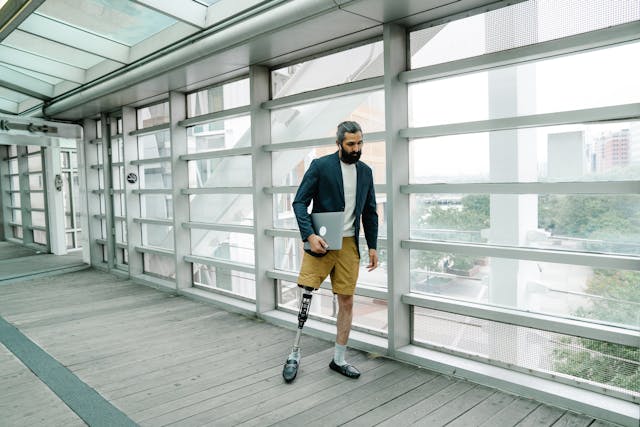
Though prosthetics may look similar from the outside, the design approach for congenital limb loss is very different from what’s used in trauma cases. These differences matter because the limb, muscles, movement habits, and emotional experience are all unique depending on how the limb loss occurred. Designing the right prosthetic requires a deep understanding of the user’s body—and their story.
Designing for a Limb That Never Grew
In congenital cases, the residual limb—or stump—is usually smaller, softer, and less developed. Bones may be shorter. Muscles may not be fully formed. The child may have less muscle control, or the limb might taper to a rounded end. This means the socket (the part that holds the prosthetic to the body) must be shaped carefully to avoid pressure points and allow movement without pain.
There’s also the question of alignment. Since the child has grown up adapting to their unique body, the prosthetic must support the way they already move, rather than forcing them to move in a new or artificial way. The goal is to support natural development—not disrupt it.
At Robobionics, we use 3D scanning and child-friendly materials to design sockets that are gentle, flexible, and easy to adjust as the child grows. We also create custom alignment strategies that match the child’s current habits, not just textbook measurements.
Designing After Surgical Amputation
In trauma-related cases, the residual limb is often shaped through surgery. The muscles are usually more developed, especially in adults, and the limb has a more defined structure. This makes it easier to fit traditional prosthetic components, but it also brings challenges like scar tissue, sensitivity, or phantom pain.
The design must account for weight-bearing tolerance, muscle control, and post-surgical healing. In many cases, sockets need to be modified to relieve pressure around scars or nerve endings. Additionally, the prosthetic may need to carry more weight or absorb impact from physical work or walking.
At Robobionics, we design trauma prosthetics that are strong, well-balanced, and made to last. Whether it’s for walking, working, or returning to sport, our devices support a wide range of activities—while prioritizing comfort and confidence.
Function Follows Familiarity
Another key difference is how the user interacts with the prosthetic. Children with congenital limb loss often learn to do tasks using their body in creative ways. They may not want or need a prosthetic for everything. Instead, their prosthetic acts as a support tool when needed. It’s introduced through play, therapy, and exploration.
Adults with trauma-related limb loss, on the other hand, are trying to regain a sense of normal function. Their prosthetic is often used to replace a specific task they once did with ease—like walking, lifting, or typing. They rely more on functionality and performance from the very start.
At Robobionics, we always begin by asking what the user wants to achieve. For some, it’s independence. For others, it’s work, school, or play. Our prosthetics are designed with real goals in mind—not just medical checkboxes.
Long-Term Care and Rehabilitation: Tailoring Support for Each Journey
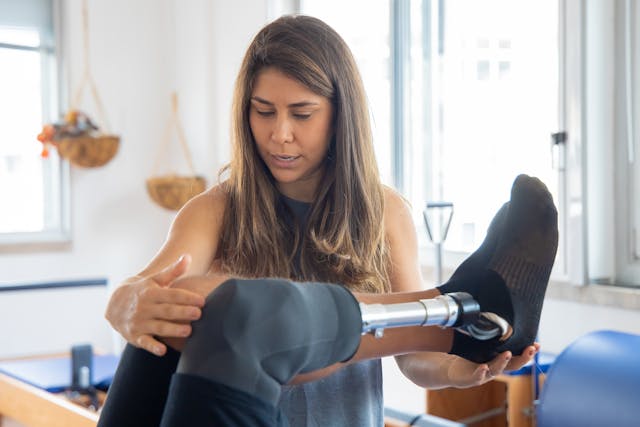
Recovery and adaptation don’t stop at the first fitting. Whether someone was born with a limb difference or experienced trauma later in life, their needs will change over time. The path is different, but the goal is the same—to feel strong, independent, and confident. Long-term care and rehabilitation look different for congenital cases versus trauma cases, and adaptive prosthetic care must reflect those differences.
Growing with the Prosthetic in Congenital Limb Loss
Children with congenital limb differences are constantly growing. Their bones get longer, their muscles develop, and their daily activities shift as they move from crawling to walking, then to writing, playing sports, and beyond. Each growth stage may require a new prosthetic or at least an adjustment to the one they have.
What makes this care unique is that it must support both physical growth and emotional development. A child who felt fine with a passive arm at age three may want a more functional device by age six. As they begin school and interact with others, their awareness of their difference may also increase. At this stage, self-image and comfort become as important as mobility.
At Robobionics, we follow a stage-based approach to pediatric prosthetics. Our designs evolve as the child grows, and our care team stays connected, helping parents understand what to expect and when it’s time to consider a new device or level of function.
Rebuilding Function and Trust After Trauma
Rehabilitation after trauma is more intense, especially in the first year. The person has to learn how to move with their new body, how to control the prosthetic, and how to trust their strength again. For many, this includes relearning basic tasks—walking, holding objects, or returning to work. Emotional recovery is deeply tied to physical progress, so therapy and support must go hand in hand.
Rehab often includes physiotherapy to build strength and prevent imbalance. Occupational therapy helps with fine motor tasks and using tools or adaptive equipment. The process can be long, but with the right prosthetic design and consistent care, users can recover not only function—but confidence.
Robobionics offers structured rehab guidance for trauma users. From the hospital bed to the first steps outside, our focus is on practical recovery that matches each person’s pace and life goals.
Adaptive Care Is About Flexibility and Listening
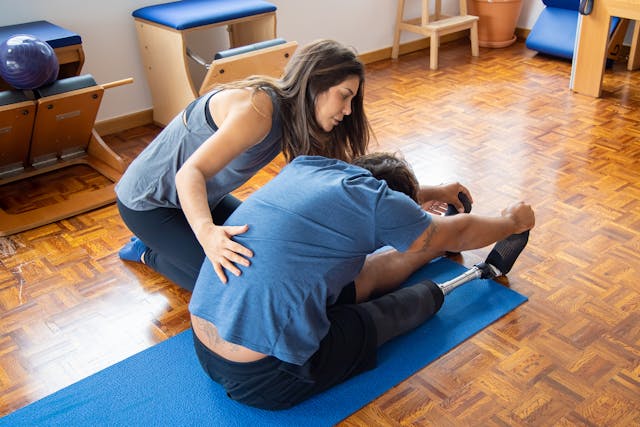
The biggest lesson from both pathways—congenital and trauma—is that prosthetic care must be flexible. No two people adapt in the same way, even with similar limb differences. What works for one child at age four may not work at age eight. What a trauma survivor needs in the first six months may be different a year later.
This is why adaptive prosthetics are not just about the device—they’re about the team, the process, and the mindset. It’s about listening, adjusting, and supporting the person as they grow, heal, and move forward.
At Robobionics, we combine engineering with empathy. Whether we’re building a bionic hand for a teenager born without fingers, or fitting a new leg for someone recovering from an accident, our focus is always on building a relationship—not just a product.
Designing Adaptive Prosthetics That Truly Fit the User
Adaptive prosthetics go beyond simply replacing a missing limb—they are designed to match how a person lives, moves, grows, and feels. The approach for congenital limb loss must be different from that of trauma-related limb loss, because the user’s needs, history, and relationship with their body are completely different. Designing the right prosthetic is about more than just mechanics—it’s about understanding the full picture.
Personalization Is the Foundation
For someone with congenital limb loss, especially a child, the prosthetic should be an extension of how they already live. These users have never known anything different, so their movements, habits, and balance are already adapted to their unique limb structure. The prosthetic should support—not replace—the way they do things.
For trauma users, on the other hand, the prosthetic often becomes a bridge back to the life they once had. It should restore confidence, stability, and familiarity. In both cases, personalization is the key. That means designing for comfort, lifestyle, age, activity level, and emotional readiness—not just the physical limb shape.
At Robobionics, we take time to understand each person’s story. We listen before we design. That’s how we build prosthetics that feel natural, functional, and empowering.
Materials, Technology, and Training Must Match the User
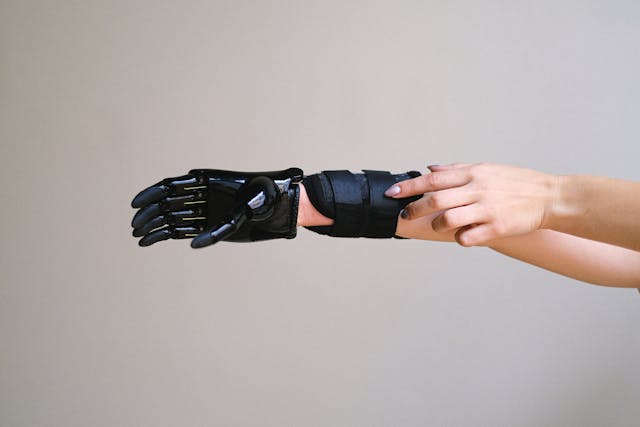
The best prosthetic in the world will not work well if it doesn’t match the user’s daily reality. A young child with congenital limb loss may need a soft, lightweight arm with no electronics. An adult trauma survivor may need a high-durability leg that supports a return to labor-intensive work. Some may want a cosmetic look. Others want high function. Some prefer passive limbs. Others want bionics.
This is where adaptive design really makes a difference. It allows the prosthetic to meet the user where they are—not force them into a one-size-fits-all solution. And it ensures that training, rehabilitation, and adjustments are part of an ongoing journey.
Robobionics offers a full spectrum of prosthetic solutions, from passive cosmetic limbs to functional myoelectric hands. Our training programs, gamified rehab systems, and follow-up support are all tailored to match each user’s needs, goals, and lifestyle.
True Fit Is About More Than Measurement
Fitting a prosthetic is not just about measuring the limb—it’s about understanding the person. How they walk, how they carry themselves, how they feel about their limb difference, and what they want to do with their life. These are all part of what makes a prosthetic truly adaptive.
Whether a child is learning to ride a cycle, or an adult is preparing to return to work after an injury, the prosthetic should help them move forward—not hold them back. That’s the difference between a good prosthetic and a great one. It fits the body—but also the life.
At Robobionics, we don’t just fit limbs—we fit lives. Every socket, joint, and material choice is guided by one question: how will this help the person move better, feel stronger, and live more fully?
Conclusion
Congenital limb loss and trauma-related limb loss may seem similar on the surface, but they require very different types of prosthetic care. One begins from birth, the other from a sudden change. One grows with the body, the other rebuilds what was lost. But both deserve thoughtful, personalized solutions that go far beyond the basic function of a device.
Adaptive prosthetics are not just about replacing what’s missing. They are about supporting what’s possible. With the right approach, every prosthetic becomes a tool for independence, a symbol of resilience, and a partner in progress.
At Robobionics, we’re proud to lead the way in adaptive prosthetic care in India. Whether you or your loved one is just starting the journey or looking for a better fit, we’re here to help—with expertise, compassion, and a clear focus on the future.
If you’re exploring prosthetic options for congenital or trauma-related limb loss, contact Robobionics today.



